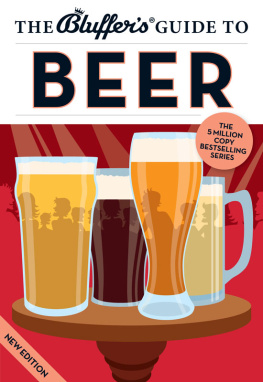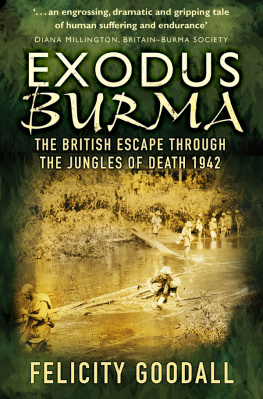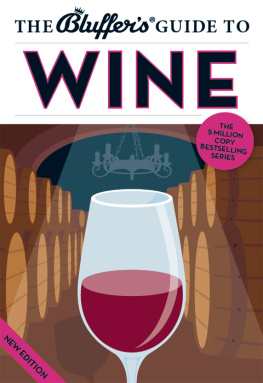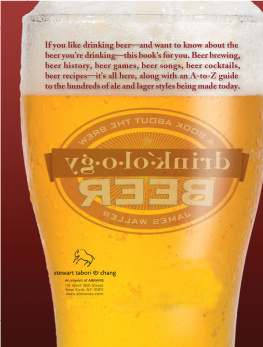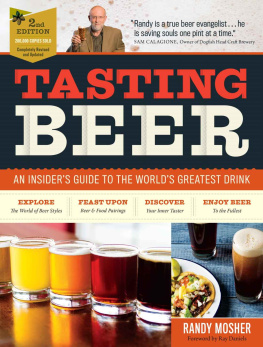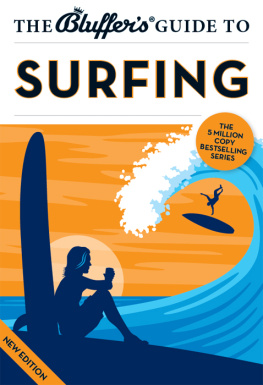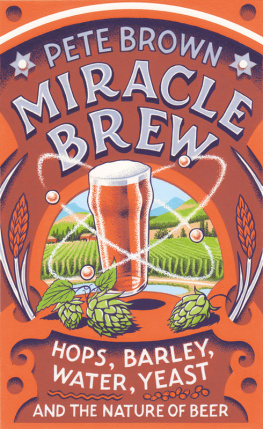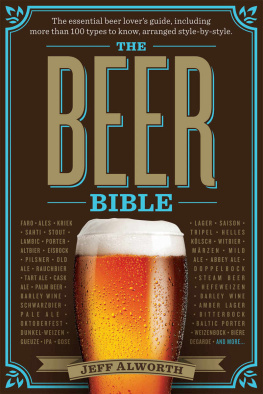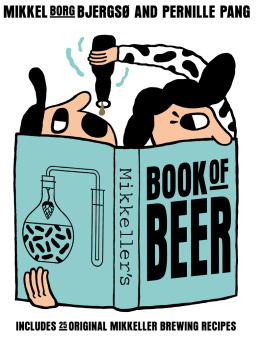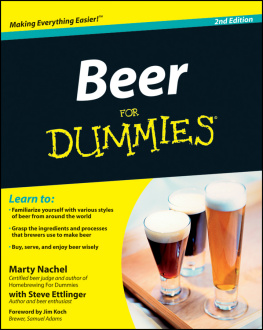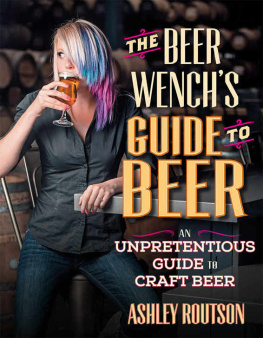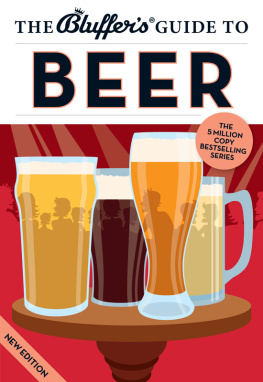Goodall - The Bluffers Guide to Beer
Here you can read online Goodall - The Bluffers Guide to Beer full text of the book (entire story) in english for free. Download pdf and epub, get meaning, cover and reviews about this ebook. City: Bluffers, year: 2013, publisher: Bluffers Guides, genre: Home and family. Description of the work, (preface) as well as reviews are available. Best literature library LitArk.com created for fans of good reading and offers a wide selection of genres:
Romance novel
Science fiction
Adventure
Detective
Science
History
Home and family
Prose
Art
Politics
Computer
Non-fiction
Religion
Business
Children
Humor
Choose a favorite category and find really read worthwhile books. Enjoy immersion in the world of imagination, feel the emotions of the characters or learn something new for yourself, make an fascinating discovery.
- Book:The Bluffers Guide to Beer
- Author:
- Publisher:Bluffers Guides
- Genre:
- Year:2013
- City:Bluffers
- Rating:4 / 5
- Favourites:Add to favourites
- Your mark:
- 80
- 1
- 2
- 3
- 4
- 5
The Bluffers Guide to Beer: summary, description and annotation
We offer to read an annotation, description, summary or preface (depends on what the author of the book "The Bluffers Guide to Beer" wrote himself). If you haven't found the necessary information about the book — write in the comments, we will try to find it.
Goodall: author's other books
Who wrote The Bluffers Guide to Beer? Find out the surname, the name of the author of the book and a list of all author's works by series.
The Bluffers Guide to Beer — read online for free the complete book (whole text) full work
Below is the text of the book, divided by pages. System saving the place of the last page read, allows you to conveniently read the book "The Bluffers Guide to Beer" online for free, without having to search again every time where you left off. Put a bookmark, and you can go to the page where you finished reading at any time.
Font size:
Interval:
Bookmark:


Colette House
52-55 Piccadilly
London W1J 0DX
United Kingdom
Email:
Website: bluffers.com
Twitter:
Published 2013
Copyright Bluffers 2013
Publisher: Thomas Drewry
Publishing Director: Brooke McDonald
Series Editor: David Allsop
Design and Illustration: Jim Shannon
All rights reserved. No part of this publication
may be reproduced, stored in a retrieval system
or transmitted in any form or by any means, electronic,
mechanical, photocopying, recording or otherwise,
without the prior permission of Bluffers.
A CIP Catalogue record for this book
is available from the British Library.
Bluffers Guide, Bluffers and Bluff Your Way
are registered trademarks.
| ISBN: | 978-1-909365-52-0 (print) 978-1-909365-53-7 (ePub) 978-1-909365-54-4 (Kindle) |

Beer, its the best damn drink in the world.
Jack Nicholson

Y ou cannot have failed to notice, even in dreary old supermarkets, that theres something afoot in the beer aisles. Raise your line of sight above the BOGOF (buy-one-get-one-free) packs of lager, depressingly cheaper than bottled water, and you will see bottles brimming with possibilities: beers flavoured with basil, watermelon or chestnut; ales aged in old whisky or cognac barrels; ales brewed by monks and fermented with wild yeast (Brettanomyces bruxellensis, no less). Nowadays, beer labels are singing the praises of hop varieties with names like music hall acts (Fuggle and Golding), and in Restaurant Le Posh you might even be presented with a beer list by a young and happening somm-ale-ier.
There are various drastic measures you could take to be mistaken for a beer expert. You could grow a beard, sport chunky knitwear, take up the bodhrn, or even steal a British Guild of Beer Writers tie bearing its proud quill and tankard livery (you wouldnt want to double up the tie with the knitwear, obviously). Alternatively, you could breeze through this book.
It sets out to conduct you through the main danger zones encountered in beer discussions, and to equip you with a vocabulary and an evasive technique that will minimise the risk of being rumbled as a bluffer. It will give you a few easy-to-learn hints and methods designed to allow you to be accepted as a beer connoisseur of rare ability and experience. But it will do more. It will give you the tools to impress legions of marvelling listeners with your knowledge and insight without anyone discovering that, before reading it, you didnt know your butt from your firkin (108 gallons versus 9 gallons, since you ask). Even as we speak, a thriving craft brewing scene is eroding the edifice of mass-produced, perma-chilled blandness as slowly but surely as meltwater trickling through a glacier. A brave new world of beer is stretching out before us a veritable bluffers paradise.
9000 BC Year Beero? We can infer from crop patterns that the ancient Mesopotamians were no strangers to a cheeky beer. Thus, the cradle of brewing lies, somewhat ironically, in the heart of the Middle East.
7000 BC The guesstimated date of pottery fragments with telltale beer residue found in the Hunan province of China.
4000 BC The ancient Sumerians produce clay tablets depicting the brewing process. Historians claim this could be the worlds oldest recipe. According to the tablets, drinking beer makes us feel exhilarated, wonderful and blissful. Raise your glass to Ninkasi, Sumerian goddess of brewing.
3000 BC Egyptian brewers decide that barley is the best grain for brewing, and soon develop crude forms of malting. The ancient Egyptian hieroglyph for meal is beer + bread. Meanwhile, stonemasons working on the pyramids are paid in kash, a primitive beer probably sweetened with dates, aniseed, honey and saffron.
2000 BC In Europe, the Celts are brewing with barley, wheat and oats.
200 AD The Babylonians start cultivating hops.
740 AD The Germans catch on, planting their own hop gardens in the Hallertau region of Bavaria.
1040 The Weihenstephan brewery, the worlds oldest brewery still in production, is founded near Munich.
1086 The Domesday Book registers 43 commercial breweries operating in England.
c 1150 In the first written account of brewing with hops, Benedictine abbess Hildegard von Bingen, in the Rhineland, observes in her treatise, Physica, that hops are a worthy replacement for gruit, a mixture of herbs used to flavour and preserve beer. The abbess is also said to be the first person to write about the female orgasm.
1295 Good King Wenceslaus II looks out, and awards the right to brew to 260 grateful citizens in Pilsen, Bohemia (Czech Republic).
c 1400 Lager is born, though the dark, cloudy style is not as we would recognise it today. Central European brewers find they can create cleaner, crisper beers by brewing and storing them in cool caves. Lagern means to store in German. Though they are yet to discover yeast, or identify its role in brewing, they stumble across the lager-making process of bottom fermenting where fermentation is much colder and slower. Ales, of course, are top fermented (see ).
c 1500 British brewers begin their love affair with the hop, once dismissed as a wicked and pernicious weed. Most English beer is made at home by alewives, seeing as they use virtually the same ingredients (minus the hops) to make bread. The best alewives display long poles covered in evergreens and/or hops (ale stakes) in their windows to attract custom, thus inventing pubs and pub signs.
1516 Duke Wilhelm IV of Bavaria draws up the Reinheitsgebot, the German beer purity law, decreeing that German beer must be made only from water, barley and hops (remember, no ones discovered yeast yet). What seems a grand gesture to protect the traditions of German beer-making is really a practical measure to prevent brewers from using wheat, which is more urgently needed to make bread.
c 1550 Europeans are drinking more beer than water. Beer is the safer option because its water content has been boiled. Queen Elizabeth I of England starts each day with a quart of beer; thats two pints on the royal cornflakes every morning.
1632 The Dutch West India Company opens the first commercial brewery in North America, in Lower Manhattan, New York. Buffalo, Brooklyn, Albany and Philadelphia become early brewing centres. Hop cultivation begins in the New World.
1698 Shepherd Neame, Englands oldest surviving brewery, is established in Faversham, Kent.
1722 The Bell Brewhouse in Shoreditch, London, makes the first porter from dark-roasted barley. Tax on gin, mothers ruin, is raised threefold because its ruining too many mothers. Porter becomes the universal cordial of the populace.
c 1750 Newfangled coke ovens, as opposed to wood or coal, allow English maltsters to avoid burning their malt for the first time. Pale malts make pale ales.
1759 Arthur Guinness buys a disused brewery in Dublin. The rest, appropriately, is history.
1777 The first steam engine is installed in a brewery, at Stratford-le-Bow, east of London.
Next pageFont size:
Interval:
Bookmark:
Similar books «The Bluffers Guide to Beer»
Look at similar books to The Bluffers Guide to Beer. We have selected literature similar in name and meaning in the hope of providing readers with more options to find new, interesting, not yet read works.
Discussion, reviews of the book The Bluffers Guide to Beer and just readers' own opinions. Leave your comments, write what you think about the work, its meaning or the main characters. Specify what exactly you liked and what you didn't like, and why you think so.

